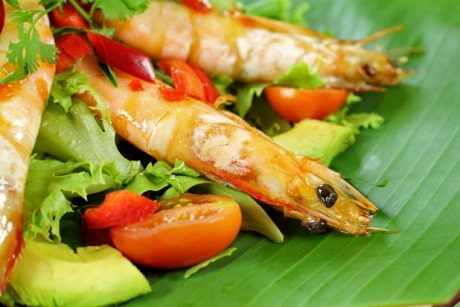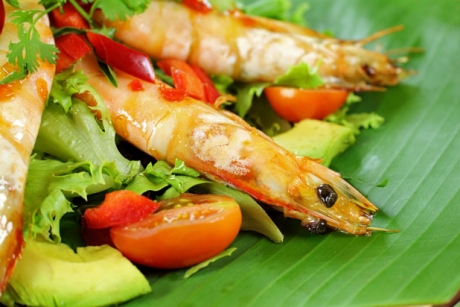10 Flavors That Can Save Your Life
For At-Sunrice Academy founder Kwan Lui, food is truly the spice of life. With a palate influenced by travels across the world, Lui originally got her start in Singapore's food industry with a line of popular spice products. In 1999, she opened the innovative culinary program focusing on both Asian and Western cooking, with a final graduate project based around seven "kingdoms" or concentrations like Health and Medicinal, Beauty and Sexuality, and Spiritual. At this year's Singapore Food Festival, they opened their doors to the public so that attendees could go on a "SpiceOdyssey" presented by the graduating class.
Originally, At-Sunrice classes were located at the Fort Canning Park in downtown Singapore where students helped curate the national spice garden. The connection to the garden informed the academy's curriculum — students learned the history, culinary use, economic ramifications, and health benefits of herbs and spices. Although the school is now in a new state-of-the-art facility in another part of town, students still explore the medicinal qualities of food, a distinctively Asian concept that sees Chinese herbal soups eaten as much for the flavor as for health, or jamu, the Malay plant-based homeopathic practice. (Photo courtesy of Flickr/jadis)
Click here for the 10 Flavors That Can Save Your Life Slideshow.
"Everything is well-being," says Lui. While in the Western world, people have started asking where food is sourced from and how it's grown in order to determine how healthy it is, Eastern food philosophy has always focused on what food does for the body. Even the aroma of food can heal, she says; for instance, smelling chocolate can release endorphins, and scents like grapefruit and basil can have a calming mental and physiological effect.
Balancing the yin, or "coolness," and yang, or "heat," of food as a way to treat ailments is an ancient part of Chinese medicine, and something that you'll hear many Singaporeans talk about. But a wide array of herbs and spices have curative qualities that generations before us were aware of but which modern society has pretty much forgotten. In fact, Lui points out, controlling the trading of certain medicinal spices played a key role in colonialism over the last century. She gives the example of Columbus arriving in the Americas in search of a new trade route for the extremely valuable spice, pepper, used to treat a variety of symptoms in antiquity but still prescribed for congestion and cough in Asian cultures. (Photo courtesy of Veer/jabiru)
Click here for the 10 Flavors That Can Save Your Life Slideshow.
Lui also mentions the Treaty of Breda: Because of its antibiotic and anti-fungal properties, nutmeg was also a sought-after spice and its use to treat the black plague figured prominently in the exchange of the land that is now Manhattan for a small nutmeg-producing island in Indonesia. Other spices that have similar properties read like a Southeast Asian recipe: cloves, nutmeg, star anise, cumin, and turmeric. Clove oil is still helpful for treating dental problems and turmeric is used for burns. Anti-inflammatory diets have gotten a lot of buzz of late, and many include the use of spices like ginger, turmeric, curry, black pepper, chiles, cloves, and cardamom, and herbs like rosemary, basil, chives, cilantro, and parsley.
Next time you have a cold, exchange that bowl of chicken soup for some Thai or Indian curry, rich with herbs and spices that have antibiotic and anti-inflammatory powers. There are other more specific maladies that a host of herbs can treat as well, says Lui. For example, Vietnamese mint, called laksa leaf, is believed to thin the blood and relieve high blood pressure. Then there's the banana tree, technically an herbaceous plant, the trunk and leaves of which are used for cooking throughout Asia and, when heated, release an enzyme that aids digestion.
Our ability to taste evolved from a survival tactic, especially in the case of bitter flavors that indicate a poisonous substance. Sour tastes signal that the substance is acidic, and acid used with food can purify and cook or preserve, like in the case of lemon or lime juice. Smell, too, for most animals is necessary for sensing danger, and on the flipside can be used to protect us. For instance, lemongrass is a useful mosquito repellant, and pandan leaves from an herbaceous plant with a similar taste to vanilla keeps out cockroaches, Lui says. With chemical-filled salves, sprays, and supplements lining shelves, it helps to know that a cure may actually be in the produce section instead.
Click here for the 10 Flavors That Can Save Your Life Slideshow.
This article was originally published August 9, 2011

